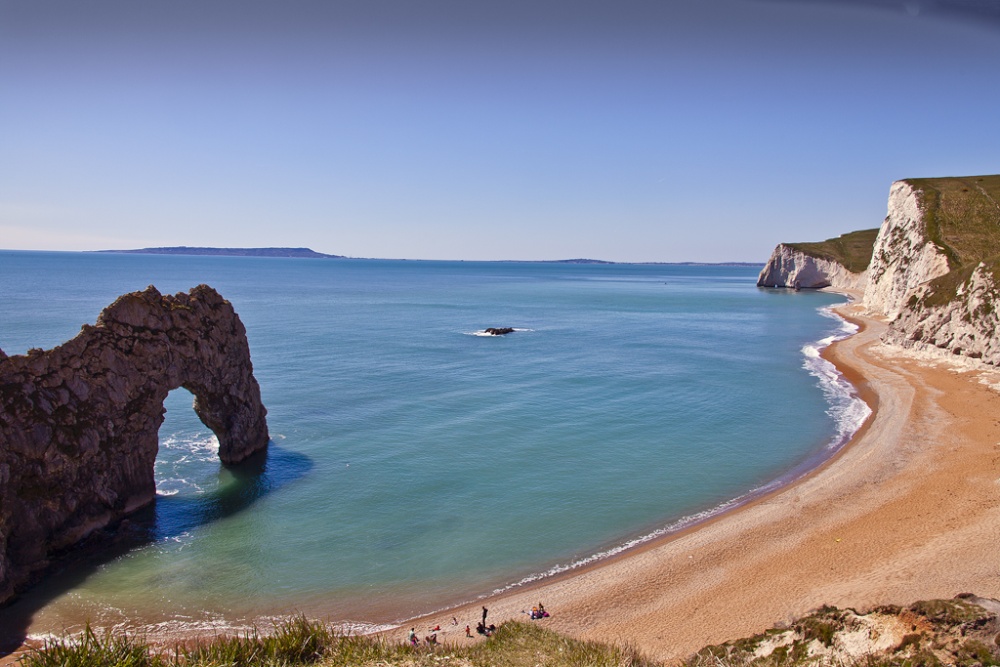
Durdle Door, Dorset - Image by PicturesOfEngland.com member Paul Hilton (view gallery)
Dorset is a beautiful county along the southern English coast, and is a very popular tourist destination with its 88 mile stretch of historic coastline, much of which is a UNESCO World Heritage Site, better known as the Jurassic Coast, which itself is a famous Dorset landmark, in particular Durdle Door, which is a giant limestone arch, and probably Dorset's most famous landmark of all. You will find this incredible natural wonder listed below, along with many more of Dorset's famous landmarks.
BOOK DORSET HOTELS & ACCOMMODATION
If you enjoy picturesofengland.com and our pictures, lists, and articles, please kindly consider making a donation to help us keep producing great content and to keep the site online for all to enjoy. You may also consider booking your England hotels through the site, as every booking made helps us to keep the site going. We list thousands of hotels and cottages throughout England including Dorset hotels which you will find links to below
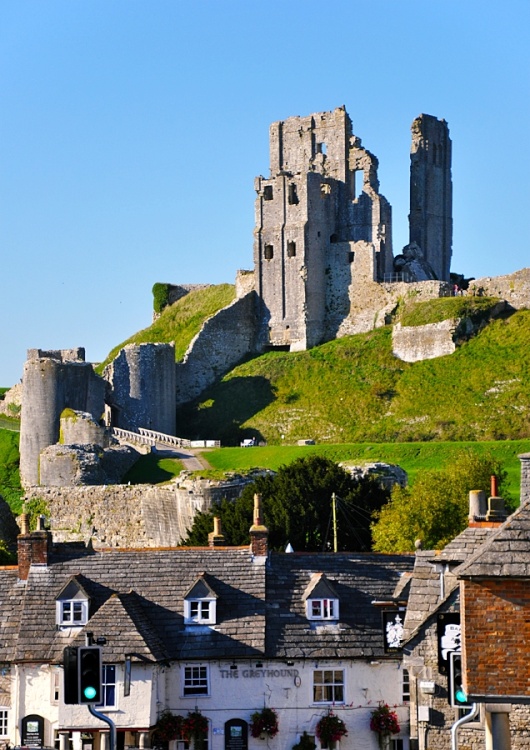
Corfe Castle - Image by PicturesOfEngland.com member © Steve Henson (view gallery)
Standing in lofty splendour above the chimney pots of the village with the roaring ocean lapping the cliffs to the other side of a rocky outcrop, the romantic ruins of medieval Corfe Castle, cast a dramatic shadow from every approach. There is evidence of habitation in the area in the days of pre-history but Corfe really came to prominence when the great castle was begun at the time of William the Conqueror.
The castle has a stirring history, and although for nearly all of the medieval period it was a Royal residence, it was tainted by dark and secretive deeds. King Edward II was imprisoned here and strangely, King John kept his crown jewels at Corfe. When the throne passed to Henry VII he gave the castle to his mother, however when Henry VIII succeeded, he claimed the castle for himself. Henry's daughter Queen Elizabeth I, sold Corfe to Sir Christopher Hatton, a favourite courtier and Chancellor. He fortified it as part of England's defences against the Spanish Armada.
Corfe Castle was eventually sold by the Hatton family, and at the time of the Civil War it was owned by the powerful Bankes family. Sir John Bankes was Lord Chief Justice to Charles I. Again mischief was afoot, Lady Bankes stood alone and in spite of holding the castle through the sieges of 1643 and 1645, she was finally brought down by the treachery of Colonel Pitman, one of her own officers.
The castle was left in ruins by the Parliamentarian forces, and although it continued in the ownership of the Bankes family it remained derelict throughout the centuries until it was gifted by the Bankes's to the National Trust in 1982.
Below the castle, the village of Corfe shows picturesque stone houses of the 17th-century. At the Corfe Castle Model Village you can see a perfect replica of the once mighty fortress. It's former splendour is vividly portrayed and like the magnificent hilltop ruin, cannot fail to impress all who see it.
ID#33266
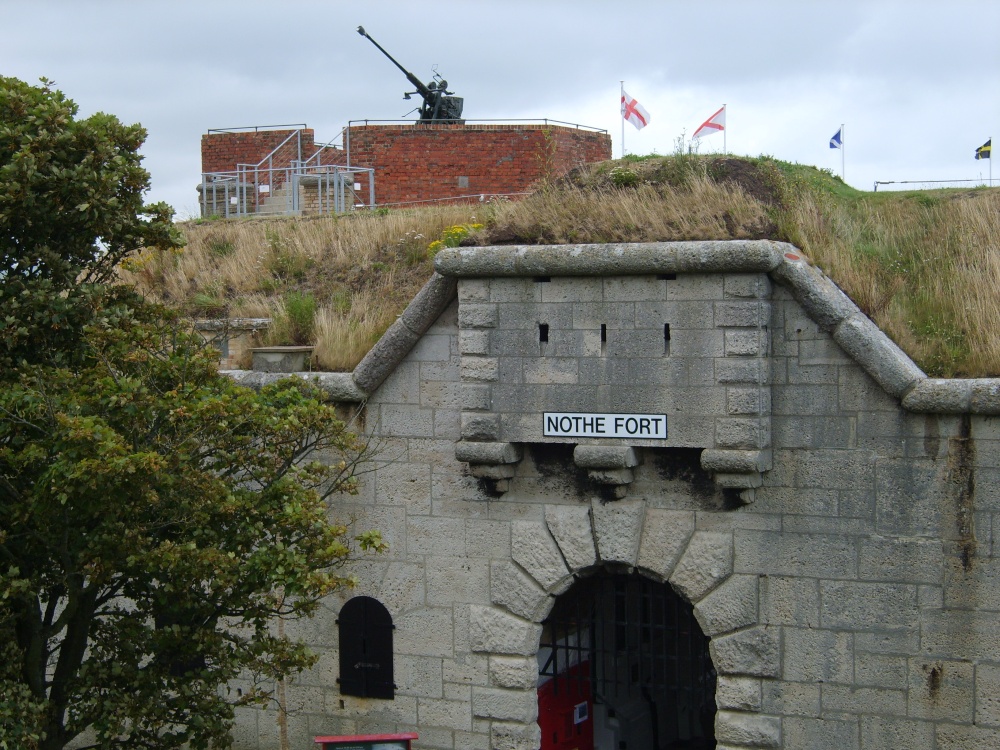
Nothe Fort - Image by PicturesOfEngland.com member Paul Clayton (view gallery)
Nothe Fort lies to the east of Weymouth. This spectacular "D" shaped building is preserved as one of the finest pieces of military architecture from the Victorian Era.
The fort was built by the 26 Company of the Royal Engineers between 1860 and 1872, on a peninsular which juts out into the sea north of Portland Harbour. Its guns covered both the approaches to Portland and Weymouth harbour from the East.
The Nothe had a range of bomb proof vaulted rooms within its walls, and was originally equipped with a mixture of Rifle Muzzle Loading cannons, later in 1888 these were replaced with seven 38 ton 12.5 inch RML's. By the turn of the 20th-century these had been replaced with two, and later three 6" Breech loading guns on the Ramparts.
In 1954 the fort was disarmed and removed of all its weapons. It was later purchased by Weymouth Council, who abandoned it to fall into a state of near ruin, its wood was stripped for use as firewood and its metal sold for scrap by a series of invading hippies and vandals.
Fortunately, Weymouth Civic Society mounted a rescue scheme, and today Nothe Fort is one of the finest museums of its kind in the country. Visitors can see lifestyle reconstructions of the guns and the men who manned them, learn all about how this splendid fortification was constructed.
This is a wonderful place to visit, it exudes all the atmosphere and might of England's military history, and it is therefore unsurprising to learn that Nothe Fort attracts more than 50,000 visitors each year.
ID#10054
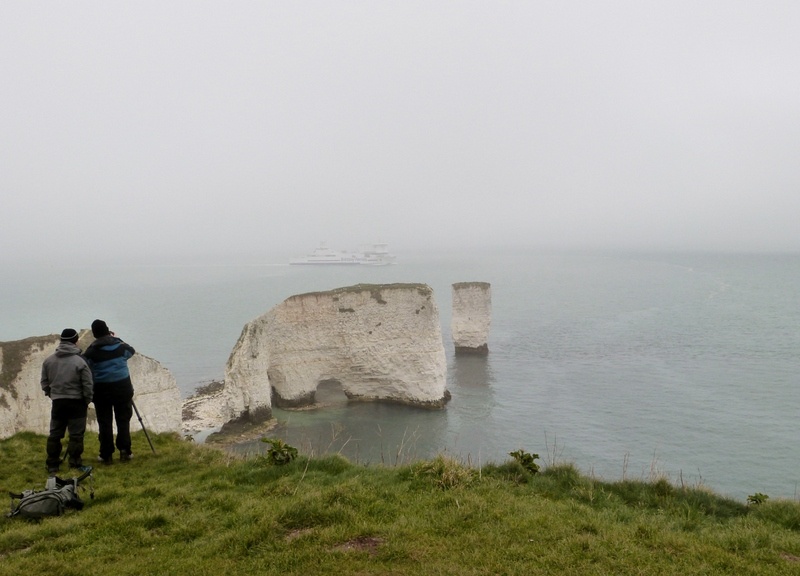
Studland - Image by PicturesOfEngland.com member Pat Trout (view gallery)
One of the most famous landmarks along the South Coast of England, Old Hary Rocks are a large chalk formation standing just out to sea off the southern end of Studland Bay.They are a major tourist attraction and offer some fantastic photography opportunities, being along the South West Coast Path - a 630 mile footpath that is popular with walkers and cyclists.
Old Harry is actually the name of the single stack of chalk standing furthest out to sea. Another stack known as Old Harry's wife stood by him until in 1896 she crumbled into the sea, leaving just a stump as a reminder of her presence. It is said that the name Old Harry came from the name of a local pirate called Harry Paye, though others believe it Old Harry could mean the devil, as the top of the cliff nearby is known as Old Nick's Ground, Old Nick being another name for the devil.
ID#10787
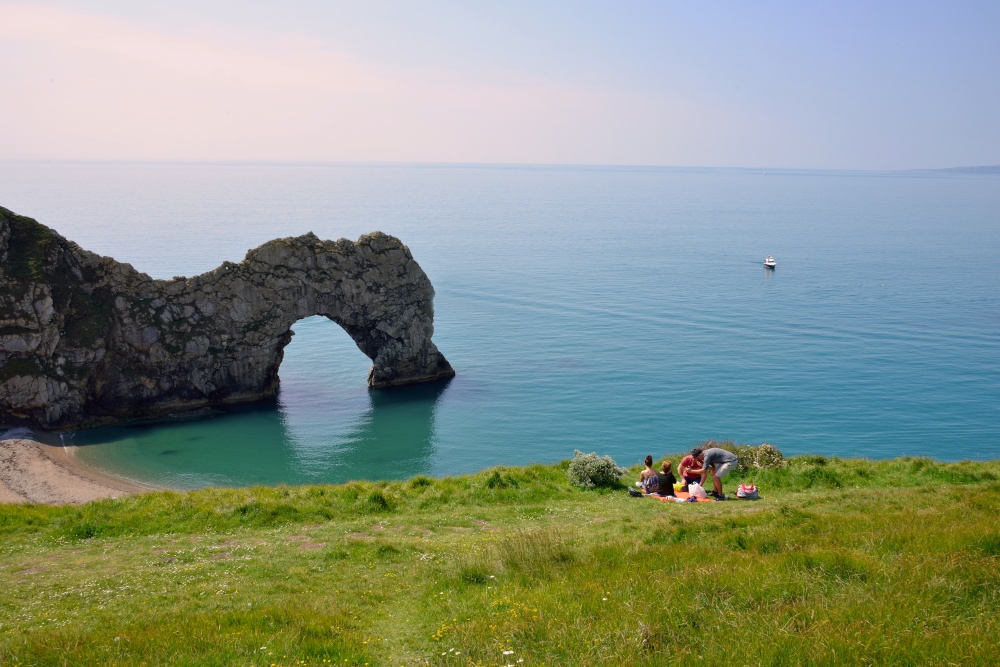
Having a Picnic at Durdle Door - Image by PicturesOfEngland.com member Alan Whitehead (view gallery)
On a coast of fabulous high white cliffs there are few views to rival the spectacular Durdle Door. This natural phenomena, carved by the sea must rank as one of the most photographed scenes on the Jurassic Coast, it is certainly one of the coastal wonders of Britain.
It is a beautiful place, a shingle cove surrounded by rocks where a 'door' has been formed by the sea eating away at relatively soft rock, leaving an exquisite open arch of hard Portland stone. Crystal clear waters flow through the door, sweeping softly up the pretty sloping beach which is used for bathing and this, together with other little coves make it a pleasurable place for sub-aqua enthusiasts.
Lying a short distance from famed Lulworth Cove where fascinating arms of rock enfold pools of water left by a retreating tide, make this a picturesque and exciting place to explore. Lulworth has delightful thatched cottages, pleasant shops and friendly inns and quaint shops, and cafe's. At nearby Bat's Head, a smaller arch carved by waves can be seen - this is affectionately known as the 'mousehole' it is beneath massive rock formations jutting out into the sea. From the mossy headland above there are seascapes of incomparable splendour.
Places to visit include: Bowleaze Cove, Kimmeridge Bay, Swanage Railway, Corfe Castle (NT) and Wareham - pretty market town.
ID#26
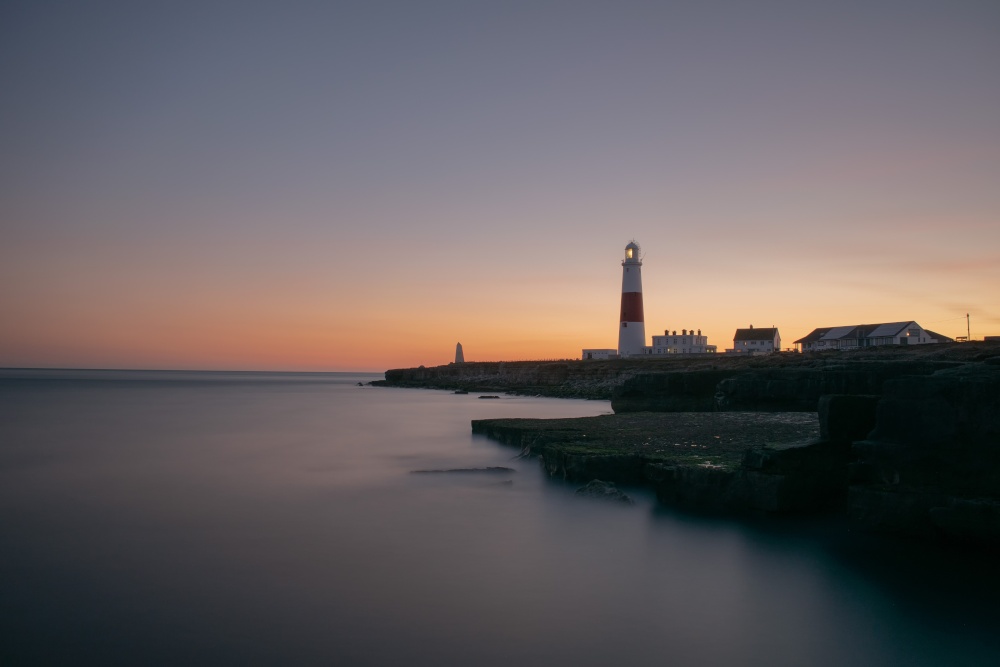
Portland Bill at Dusk - Image by PicturesOfEngland.com member Rob Mellor (view gallery)
One of the most recognisable landmarks in Dorset, the red and white Portland Bill Lighthouse has guided ships since it first turned on its lights over a century ago on 11th January 1906. Back then its lights had a range of 25 nautical miles, however, that was reduced to 18 after the station was re-engineered in 2019. The original optics can still be seen in the tower base display.
If you are up for the challenge, there are 153 steps up to the lantern room, with windows on the way up, but once climbed you'll be privileged to wonderful views of the stunning Jurassic coast and some great photo opportunities.
A visit to Portland Bill is a great experience for all the family, though it is worth noting that you will need to be at least 1.1 meters tall to climb the lighthouse, so if you are planning on taking your kids, you might want to check beforehand to save any disappointment!
ID#46
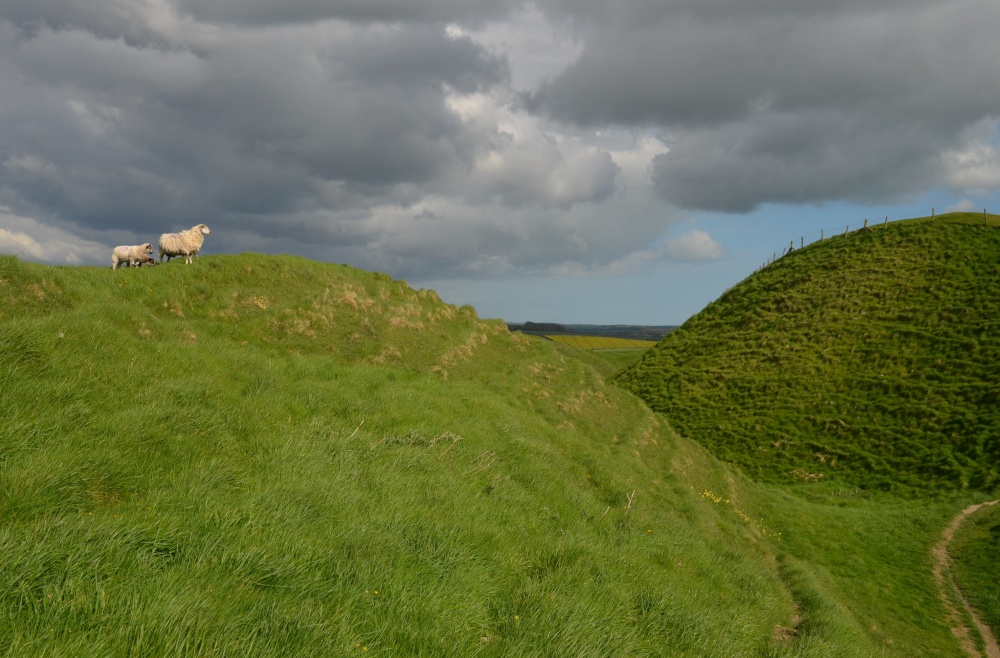
Maiden Castle - Image by PicturesOfEngland.com member Jez Taylor (view gallery)
The finest Iron Age hillfort in Europe, Maiden Castle is the size of 50 football pitches and was first built in 600BC over the remains of an earlier Neolithic settlement.
ID#9933
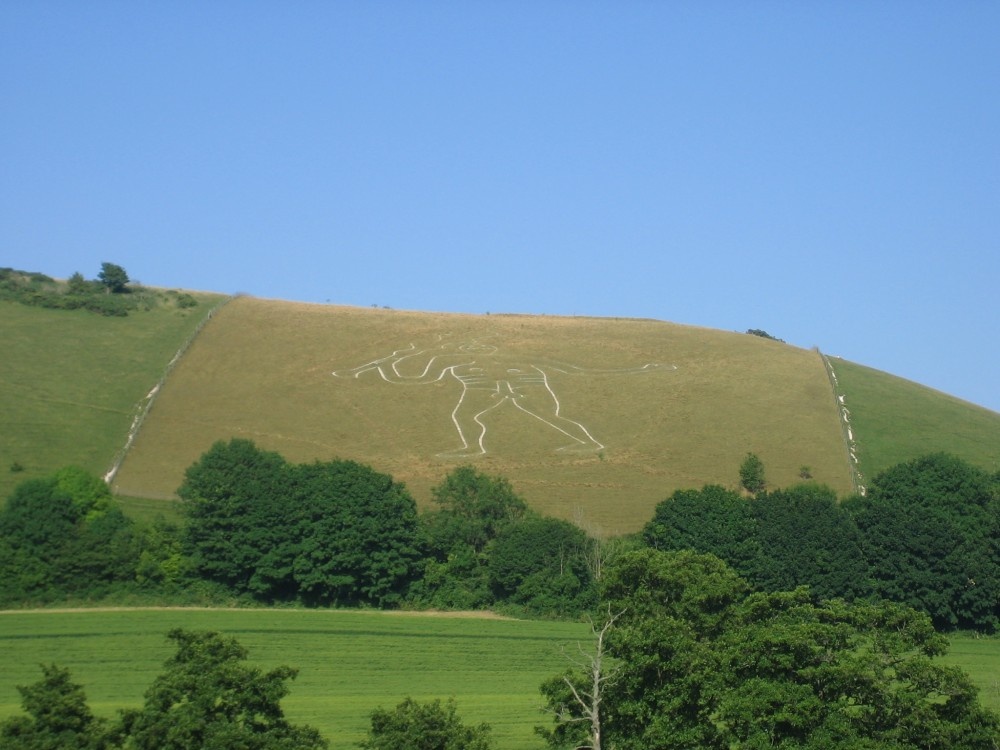
Cerne Giant in Cerne Abbas, Dorset. - Image by PicturesOfEngland.com member Irina Roomussaar (view gallery)
This magnificent figure cut into the turf of a chalk hillside is best viewed from the north of the village. He is known as "The Cerne Giant" or sometimes as "The Rude Man" and is believed to have been cut during the Roman occupation or even earlier.
The largest hillfigure in Britain, he measures a splendid 180 ft tall and has long been associated with Pagan fertility rights. It is further believed that there were strange happenings in this area during the 16th-century and that the giant may be a legacy of this time.
Whatever his origins, he remains a superb landmark amidst the lovely rural Dorset countryside and it is well worth finding the lay-by along the A352 to get a good look at him.
The site is cared for by the National trust and there is no direct access.
ID#9739
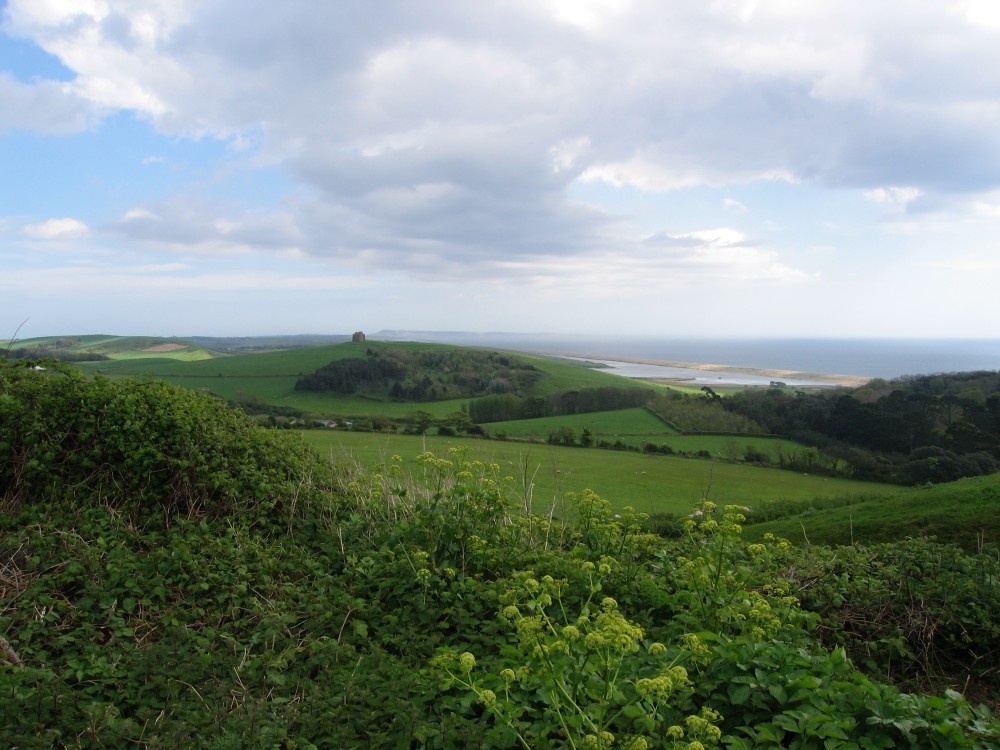
St. Catherine's chapel high on the hill above Abbotsbury and overlooking Chesil beach - Image by PicturesOfEngland.com member Chris (view gallery)
An interesting medieval Chapel dating from the 14th century, perched on top of a hill in Abbotsbury, affording stunning views of Lyme Bay, The Fleet, and Chesil Beach and the beautiful surrounding countryside. Absolutely worth the short trek up the hill, just for the views alone. The chapel was built by the monks out of local stone as a place of pilgrimage and retreat, and was also used by sailors as a landmark, as they crossed the hazardous waters of Lyme Bay, which is why the chapel survived the dissolution.
ID#9984
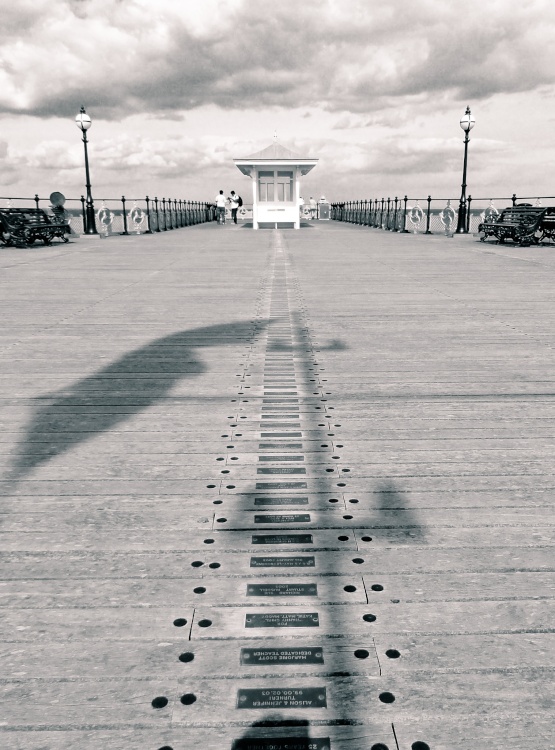
Swanage pier - Image by PicturesOfEngland.com member Mick Carver (view gallery)
This elegant Victorian Pier was built over 100 years ago for passenger ship services and is now an important part of Swanage's Victorian heritage. It is open all year round from approx 9am to 4pm each day, though the cafe and shop only operate during seasonal hours.
ID#11179
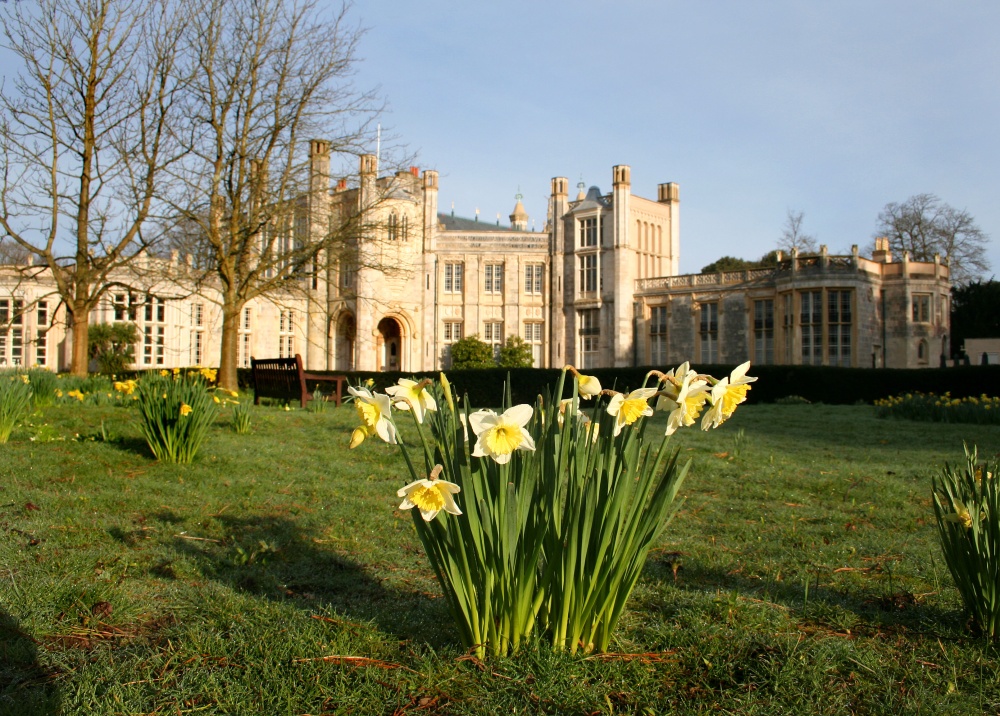
Highcliffe Castle, Dorset - Image by PicturesOfEngland.com member Steve Elson (view gallery)
This stunning Grade 1 listed Mansion is situated on the cliffs at Highcliffe, overlooking Christchurch Bay and The Isle of Wight. It was built between 1831 and 1835 by Lord Stuart de Rothesay, and is often described as the most important surviving house of the Romantic and Picturesque style of architecture.
The building was derelict for 2 decades after 2 fires, but has now been fully restored externally.
The castle is free to visit and is often used as a wedding venue. The grounds were designed by the famous Capability Brown.
ID#10509
| Article Title | Author | Date |
| The Prettiest Streets in England | poe | 24th November 2020 |
| 10 of the best villages to visit in the Peak District, England | poe | 28th July 2020 |
| A look at some of the most famous views in England... | poe | 16th May 2020 |
| THE TRIAL OF THE PYX | Paul V. A. Johnson | 19th August 2019 |
| Tyneham - Dorset's Lost Village | poe | 9th June 2016 |
| The Best Sandy Beaches in Dorset | poe | 7th June 2016 |
| 20 Of The Best Market Towns In England | poe | 1st June 2016 |
| A Human Heart and a Ghost Story in a Northamptonshire Church | Charles Moorhen | 30th October 2009 |
| Exploring the English Village Churchyard | Charles Moorhen | 29th October 2009 |
| Local Legends - The Basingstoke Burial | poe | 28th February 2008 |